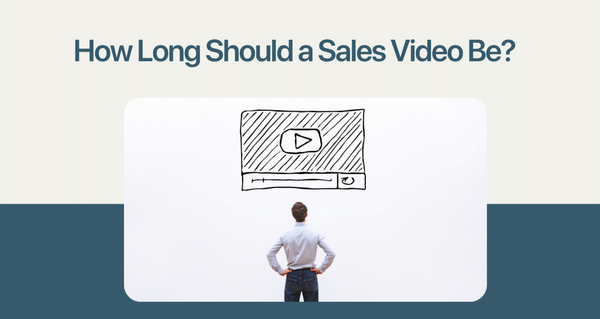While in the rat race of closing the most deals, companies tend to compromise on their sales and marketing efforts. That is where Lead Qualification comes into the picture. When Sales and Marketing teams work in close collaboration to understand the sales readiness of a prospect, it is called Lead Qualification.
Qualifying leads helps the sales team to balance out the quality and right quantity of sales prospects and figure out which prospects can be converted immediately, and which ones need more time and nurturing before conversion.
Time is money. And in case your sales and marketing team has been wasting some precious time on leads who are less likely to convert, it is a huge loss of resources for your company. Besides, you would be missing out on the leads who are sales-ready.
Who Is A Qualified Lead?
A prospect who perfectly fits your ideal customer profile is a leader who is qualified enough for your efforts.
Every lead is initially cold. They need to be nurtured and taken care of before turning them into a hot lead.
The marketing and sales campaigns go hand in hand with the transition of leadership from cold to warm to hot.
Any lead who responds to your endeavors with an equal amount of interest becomes a hot lead.
Similarly, any lead who remains cold throughout is less likely to convert and is not worth your efforts.
Understanding Lead Scoring
Now that we know how important identifying a quality lead is, we must understand how exactly we go about it?
Here’s the answer- Lead Scoring.

Lead Scoring is a simple yet effective way of rating the readiness of your lead.
In Lead Scoring, you get to prioritize your leads in terms of their readiness to convert into a customer. You set aside some demographic, behavioral, or instrumental criteria scales against which each of the leads is scored.
These scores are usually numerical values.
The model for lead scoring is subjective to every business.
Online Interaction, Email Engagement, Demographics, Company Information, etc., are a few common KPIs that companies use for lead scoring. Choose the one that best matters to you based on the kind of sales you've made previously.
The Three-Tier Lead Scoring System
For increasing the probability of converting a lead into sales, you must funnel out the Ideal Customer Profiles.
This can't happen in the first instance. Before you find your hot ones, your leads go through a process of qualification. Read on to know the three levels of lead qualification.

1. Information Qualifying leads (IQL)
When a website visitor or someone from the target audience, shows a sign of interest in your company, he qualifies to become an IQL. This sign of interest can be something as simple as signing up or sharing his information with you.
At this stage, the lead is still cold and is wary about approaching you.
Here’s where you capture them and let this interest grow. However, the efforts of the marketing team must be minimal until the lead qualifies for the next level. Keep the communication limited to more information about the company and how you can solve their problem. You can also talk about your brand but save the most of it for the next level of leads.
A large chunk of IQLs are spa and will not transition to the next stage. You can still keep in touch with the but your marketing efforts should be channelized to the next tier of leads
2. Marketing Qualified Lead (MQL)
The marketing qualified Lead is identified by this showcase of interest in your solution. This could be in terms of downloading content, persistent email engagement, or any other criteria.
Once your cold lead reaches a certain threshold of engagement, he becomes warm enough for the marketing team to increase efforts.
At this stage, you don’t just increase the interest but navigate it towards making a decision.
On one hand, you compel them with your brand’s awareness and language, and on the other, you guide them through the process.
You can offer them demos, free trials, cost estimates, free consultation, etc.
Simultaneously you also educate them about your product, company, and brand.
To convert these warm leads into hot leads you will have to travel the extra mile and offer them personalized offers. Send them personalized videos, follow-ups, etc.
Remember to not spam them to an extent that they’d leave but constantly remind them of your presence.
3. Sales Qualified Lead (SQL)
The ones who’ve reached this level are the Hot Leads.
Now that you know that the leads are interested in you, let them know that you are equally interested in them.
Here’s where the sales team comes into the picture.
Make the calls to the lead, follow them up and follow them up again. Give the lead as much attention as possible.
Let them know that you care about them and that your desire is mutual.
However, do not seem desperate. Instead, make them realize that your collaboration is larger than business and mutually benefits.
Methods For Lead Qualification
Here’s the truth- there is no holy grail for Lead Qualification. There are only frameworks that can help you funnel out qualified leads. However, the method you choose for lead qualification is subjective to the type, size, and style of your company.

Here are three of the best-reviewed methods for Lead Qualification.
1. BANT
This is a classic and straightforward methodology used to estimate the quality of the lead. BANT stands for Budget, Authority, Need, and Timeline- the four criteria that you’d scale your lead against.
Budget
The first checkbox to be ticked would be to see if the pricing that the lead is looking for is matching with your pricing.
This depends on the budget they’ve said aside from the purchase, the kind of findings they get, and the quality they are looking for.
If lead is not ready to spend the kind of money that your solution demands, there’s no point in pursuing them.
Here’s when you let go of them.
Authority
The lead needs to be a key decision-maker. The person in contact must either be the ultimate buyer or someone with the authority to decide.
If your lead is neither of these, then it is best to ask him to connect you with the main contact person.
If this point is not identified at an early stage, your Sales Representatives might waste a lot of precious time convincing the wrong person.
Need
Every individual or business has a problem. But at a sales point of review, you must understand the scale of the problem.
Is the problem big enough for the company? Is the problem undermining their business? Is your solution going to benefit them on a large scale?
Getting your answers to these questions will help you understand if the lead “needs” your solution or not.
In case, he does not “need” your solution and is just considering it, you can always put in the marketing effort. However, pursuing that lead is not a good idea.
Timeline
Here, you need to assess the urgency of the lead.
If the lead’s timeline is longer than your sales cycle, the sales team should let go of the lead.
Because persuading a lead at the wrong time can steal you the opportunity of pursuing him when the timing is right.
BANT’s simplicity and bluntness help the sales and marketing teams to save their valuable resources and efforts for the right kind of prospects. However, it does not align much with the evolving purchase patterns.
2. GPCTBA/C&I
This long acronym is a pretty elaborate and effective way of qualifying a lead.
GPCTBA/C&I is the more updated version of BANT. The need for this updated version was because of the changing buyer behavior.
Gone are the days when Sales Representatives could manipulate the lead. Consumers of the new age are informed and aware.
In such a scenario, GPCTBA/C&I lets you make a deal of value rather than numbers.
GPCTBA/C&I stands for Goals, Plans, Challenges, Timeline, Budget, Authority, Negative Consequences, and Positive Implications. By understanding your lead based on each of these criteria, you will be able to pitch value to your lead.
A quick breakdown of the questions you’d want to know the answers for -
Goals
What are the short-term and long-term goals of the lead?
What is their vision for the larger picture?
Plans
How are they planning to achieve their goals?
How are they going to go about their plans?
Challenges
What challenges do they have to face while executing the plan?
Which of the challenges are they not able to tackle?
Timeline
When are they planning to tackle the challenge?
By when are they planning to reach the goals
Budget
Have they assigned a budget for the challenge that you’d be solving?
Is the budget aligning with your solution’s price?
Authority
Is the lead you are speaking to the ultimate buyer?
How much influence does he have on the ultimate buyer?
Negative Consequences and Positive Implications
Here you are going to understand just how important your solution is to the lead.
Try to know the downside of not solving the challenge. This helps you understand the gravity of the situation.
Simultaneously, try to analyze the rewards your lead would reap by solving the challenge. See if your solution would be benefiting the ultimate goal of the lead.
GPCTBA/C&I is a great method to make a deep-rooted analysis of your client. It helps you provide better solutions for your leads.
On the flip side, not every business would require such an elaborate process of understanding the lead.
3. CHAMP
CHAMP is a combination of straightforwardness and modern ideology.
It stands for Challenges, Authority, Money, Priority.
Even though CHAMP’s core framework resembles BANT, the two methodologies take different roads.
In CHAMP, challenges are placed above anything and everything. That is because the 21st Century buyers understand the importance of ROI.
Challenge
Understand the pain points of your lead. Because your lead would buy from you only if you can relieve them from their pain.
See if your solution is solving their problem.
Here’s where the sales and marketing team is supposed to be empathetic towards the lead.
Authority
Just like in GPCTBA/C&I, analyze if the lead you are talking to is the ultimate buyer or not.
If he is not the one who’s going to take the final decision, understand to what extent he can influence the decision-maker.
Keep your sales efforts only to that extent.
Money
The reason why money comes third in the CHAMP methodology is that the new age buyers don’t see money as a mere exchange. They look at it in the terms of return on investment.
At this stage, find out about the budget that they’ve said aside for the challenge. Once you do that, check if the budget aligns with your profits.
If yes, then analyze how much value you can provide for the invested penny.
Priorities
If your solution is not a need of the hour for your prospect, then he is probably still warm.
At this stage, your Sales Development Reps have to let go of the lead. However, the marketing team should continue to keep the lead warm.
CHAMP is a way to understand the buying process of your lead and make your sales effort accordingly.
9 Examples For Qualifying Questions
Here are some tried and tested examples of Lead qualifying questions that you can ask your leads during the customer conversations.

- What is your long-term goal?
- What problem are you trying to fix with our service?
- Would you like us to speak to any other teammate of yours?
- How much budget have you set aside for solving this problem?
- Have you tried solving this challenge previously? If yes, help us understand what didn't work for you.
- What is your main priority right now?
- By when do you want your problem solved?
- What would be the repercussions of not getting the problem solved?
- How would you like our solution to benefit your company?
Lead Qualification To Your Rescue
Lead qualification saves you a whole lot of time and effort, giving you the ability to work on your lead generation strategy more effectively and create a more well-oiled marketing funnel.
Figuring out which leads to target and which leads to groom helps you get a clearer idea of your marketing effectiveness and tweak your strategy for maximum conversion rates.




